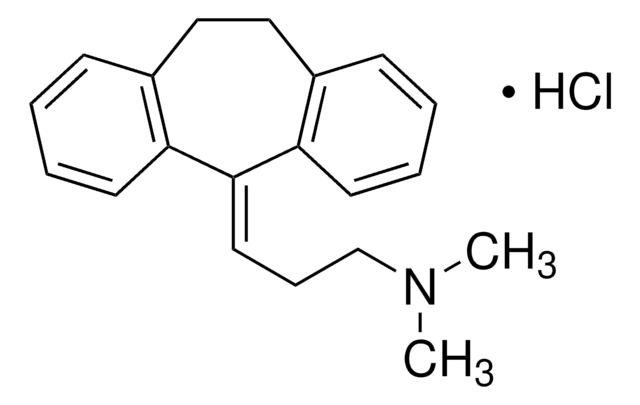Key Documents
11-0398
Fluorescamine
≥98.0%
Synonim(y):
4-Phenylspiro-[furan-2(3H),1-phthalan]-3,3′-dione
About This Item
Polecane produkty
Próba
≥98.0%
dostępność
available only in Japan
mp
153-157 °C (lit.)
ciąg SMILES
O=C1OC2(OC=C(C2=O)c3ccccc3)c4ccccc14
InChI
1S/C17H10O4/c18-15-13(11-6-2-1-3-7-11)10-20-17(15)14-9-5-4-8-12(14)16(19)21-17/h1-10H
Klucz InChI
ZFKJVJIDPQDDFY-UHFFFAOYSA-N
Szukasz podobnych produktów? Odwiedź Przewodnik dotyczący porównywania produktów
Zastosowanie
Przydatność
Kod klasy składowania
11 - Combustible Solids
Klasa zagrożenia wodnego (WGK)
WGK 3
Temperatura zapłonu (°F)
Not applicable
Temperatura zapłonu (°C)
Not applicable
Środki ochrony indywidualnej
Eyeshields, Gloves, type N95 (US)
Certyfikaty analizy (CoA)
Poszukaj Certyfikaty analizy (CoA), wpisując numer partii/serii produktów. Numery serii i partii można znaleźć na etykiecie produktu po słowach „seria” lub „partia”.
Potrzebujesz przykładowego certyfikatu analizy (COA)?
To jest przykładowy certyfikat analizy (COA) i może nie reprezentować ostatnio wyprodukowanej partii tego konkretnego produktu.
Masz już ten produkt?
Dokumenty związane z niedawno zakupionymi produktami zostały zamieszczone w Bibliotece dokumentów.
Nasz zespół naukowców ma doświadczenie we wszystkich obszarach badań, w tym w naukach przyrodniczych, materiałoznawstwie, syntezie chemicznej, chromatografii, analityce i wielu innych dziedzinach.
Skontaktuj się z zespołem ds. pomocy technicznej








